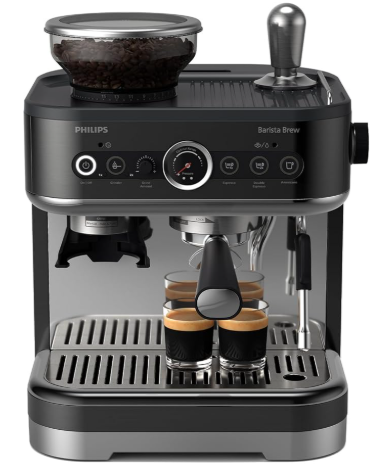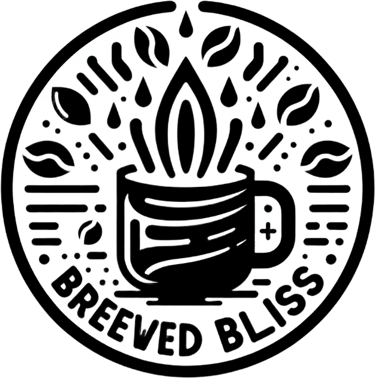Understanding the Real Difference Between Light, Medium & Dark Roast Coffee
BLOG NEWSMETHODS
10/21/20255 min read


What is Coffee Roast Level?
The roast level of coffee refers to the degree to which coffee beans are roasted, determined by the duration and temperature of the roasting process. This significant aspect of coffee preparation not only influences the aroma and flavor but also affects the coffee's acidity, body, and caffeine content. Understanding different roast levels—light, medium, and dark—requires an appreciation of the complex physical and chemical transformations that occur during roasting.
Initially, when green coffee beans are subjected to heat, they undergo a series of changes. The roasting process typically begins at around 150 degrees Celsius, where the beans start to lose moisture. As the temperature rises, the beans caramelize, leading to the development of sugars that contribute to flavor richness. At this stage, the coffee is designated as a light roast. Light roasted beans retain a higher acidity and exhibit vibrant, fruity flavors, often with pronounced floral notes.
As roasting continues, beans transition into the medium roast category, characterized by a deeper color and balance between acidity and body. The sugars continue to caramelize, giving rise to a complexity of flavors ranging from nutty to chocolatey. This stage is favored by many coffee enthusiasts for its rich mouthfeel and well-rounded taste profile.
Finally, dark roasts are achieved when the beans reach higher temperatures, resulting in a shiny, oily surface. During this phase, the sugars begin to carbonize, producing bold, robust flavors and often a smoky or bittersweet taste. It is essential to note that the extent of roasting affects not only taste but also caffeine content; darker roasts usually contain slightly less caffeine compared to lighter ones due to the longer exposure to heat.
In conclusion, the coffee roast level is a pivotal determinant of flavor, aroma, and the overall coffee experience, making it an integral concept for those who appreciate this beloved beverage.
Flavor Profiles: Light, Medium, and Dark Roasts
Coffee enthusiasts often find themselves drawn to the distinct taste profiles of light, medium, and dark roasts, with each offering a unique drinking experience. Light roasts are characterized by their bright acidity and floral or fruity tasting notes. These coffees retain more of the original bean's qualities, which can include hints of citrus or berry, resulting from the shorter roasting time. The lower levels of roasting result in a more pronounced natural flavor, and the aroma is often vibrant and fresh. As a result, light roasts can be an excellent choice for those who appreciate a delicate and complex cup of coffee.
In contrast, medium roasts strike a balance between the bright acidity of light roasts and the fuller body of dark roasts. These coffees typically exhibit a sweeter and more rounded flavor profile, with tasting notes that often include caramel, chocolate, or nuttiness. The acidity is moderate, providing a smooth drinking experience without overwhelming sharpness. Medium roasts are often favored for their versatility, making them suitable for a variety of brewing methods and palates. The aroma can be rich and inviting, appealing to a wide range of coffee drinkers.
On the other hand, dark roasts deliver bold and robust flavors, marked by a pronounced bitterness and lower acidity. These coffees often feature tasting notes of dark chocolate, toasted nuts, or even smoky undertones, resulting from the longer roasting process that caramelizes the sugars and brings out deeper flavors. The aroma of dark roasts can be intense and powerful, with a rich, almost campfire-like scent. It's important to note that while the roasting process enhances certain flavor characteristics, the growing region and bean variety also significantly influence the overall taste. Understanding these nuances helps coffee lovers choose the right roast to suit their flavor preferences.
Caffeine Content: Myths and Facts
Caffeine content is often a significant consideration for coffee enthusiasts, yet numerous misconceptions contribute to confusion regarding light, medium, and dark roast coffees. A common belief is that dark roasts contain higher caffeine levels than their lighter counterparts. However, this assertion is misleading and requires a closer examination of the roasting process and its effects on caffeine stability.
During the roasting process, coffee beans undergo various chemical transformations. Initially, beans contain approximately the same amount of caffeine regardless of their roast level. As roasting progresses, some degradation of caffeine occurs, but this decline is minimal. Generally, the roasting time and temperature influence the changes occurring within the beans, but they do not significantly diminish caffeine's overall presence.
When comparing caffeine content, weight must be considered. A single scoop of dark roast will weigh less than that of a light roast due to the physical expansion and moisture loss during roasting. This means that if one were to measure by volume, dark roasts could appear to be lower in caffeine because less coffee is used. Conversely, when comparing caffeine by weight, light roast generally retains more caffeine than dark roast, although the differences are generally marginal. In most cases, an 8-ounce cup of coffee, regardless of its roast type, will contain around 80-100 milligrams of caffeine.
Scientific studies have shown that brewing method and bean origin often have a more substantial effect on caffeine levels than roast type. Consequently, if one is seeking to enhance caffeine intake, factors such as grind size, brewing time, and water temperature can have more pronounced effects than simply choosing between light or dark roast coffees. By understanding these complexities, coffee drinkers can make informed choices based on both flavor preference and caffeine expectations.
Choosing the Right Roast for You
Selecting the ideal coffee roast involves understanding personal preferences and how they align with the characteristics of light, medium, and dark roasts. Each type of coffee roast offers distinct flavor profiles, acidity levels, and aromas that cater to different palates. To begin the journey of identifying one’s preferred roast, consider the flavor nuances one enjoys. Light roasts are often noted for their bright and fruity flavors, while medium roasts strike a balance with richer tastes and moderate acidity. In contrast, dark roasts typically feature bold, smoky notes and a heavier body.
Another important factor to consider is the brewing method you intend to use. Certain roasts lend themselves better to specific preparation techniques. For instance, if you’re using a pour-over method, a medium roast may highlight the coffee’s intricate flavors, while a dark roast could overshadow these subtleties. Conversely, espresso enthusiasts may favor darker roasts for their powerful profile that stands up to milk or other ingredients.
When pairing coffee with food, it is essential to think about complementary flavors. Light roasts, with their lively notes, pair well with breakfast items such as fruit, pancakes, or yogurt. Medium roasts harmonize beautifully with baked goods like muffins and pastries, while dark roasts can enhance the richness of desserts like dark chocolate or even savory dishes like grilled meats.
In addition to choosing between different roast levels, exploring single-origin coffees versus blends can elevate the tasting experience. Single-origins offer unique flavors characteristic of a specific region or farm, whereas blends can provide a well-rounded profile, catering to a broader range of tastes. Embracing experimentation with various roasts is the key to discovering your perfect cup of coffee.
One of our favorite coffee makers....
PHILIPS Barista Brew Semi Automatic Espresso Machine


About this item
Brew like a barista: The Philips Barista Brew Espresso Machine empowers coffee enthusiasts to create barista-quality brews with tools like the 58mm portafilter and single & dual walled filter baskets.
Integrated guidance: Enjoy intuitive guidance for crafting every cup, ensuring a rich aroma and satisfying espresso experience with the premium calibrated tamper & countertop-safe tamping system.
Elevate your coffee experience: Enjoy a 250g bean container that ensures freshness of your beans.
Upgrade your milk frothing experience: Elevate your milk frothing experience effortlessly with the 450ml stainless steel milk jug and powerful steam wand.
Choose your ideal brew: experience convenience with the Americano button and integrated hot water outlet, or choose a single or double espresso.
Click 'Shop Now' to find on Amazon...
Why the PHILIPS Barista Brew Semi-Automatic Espresso Machine one of our favorites...
The PHILIPS Barista Brew Semi Automatic Espresso Machine is more than just a coffee maker—it's a daily dose of barista-level bliss in our own kitchen. It’s quickly become one of our favorite machines, and here's why.
First, let’s talk about consistency. This machine delivers rich, velvety espresso shots with the perfect crema—every single time. Whether you're pulling a single or a double, the semi-automatic design gives you control without being overly complicated, making it ideal for both beginners and seasoned home baristas.
The built-in steam wand is another major win. It creates creamy, café-quality microfoam for lattes, cappuccinos, and flat whites. It heats up quickly and gives you just the right amount of power to texture milk exactly how you like it.
